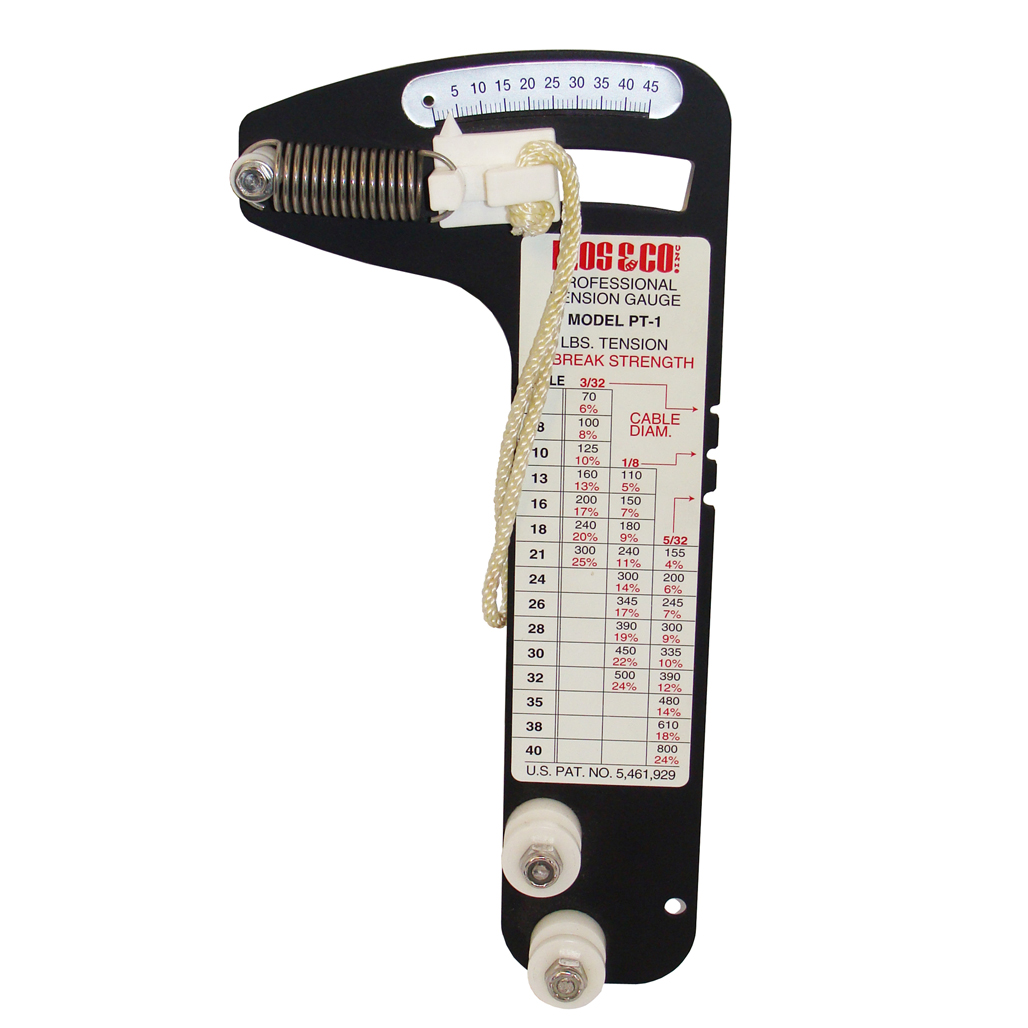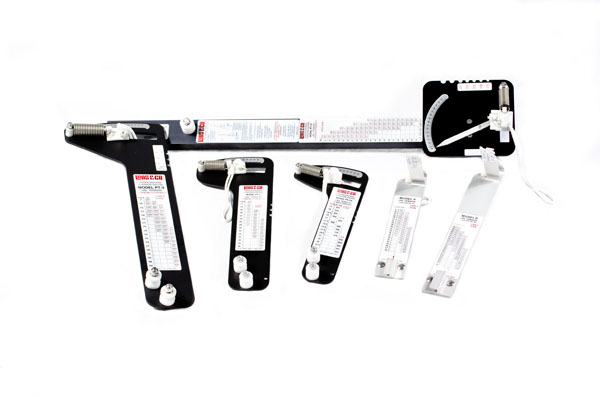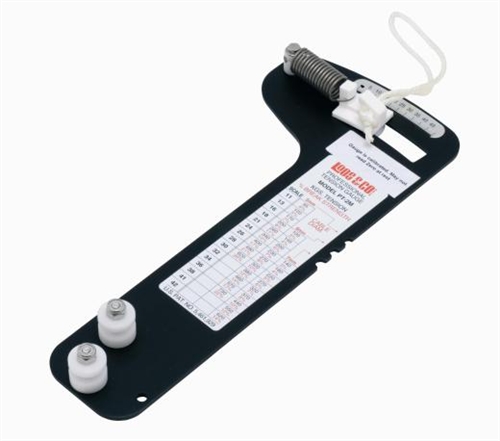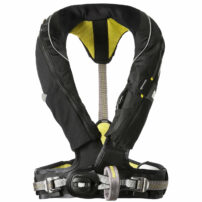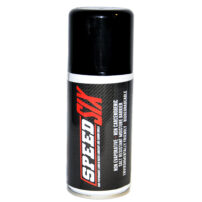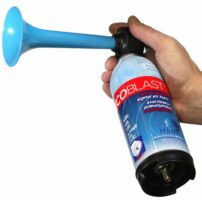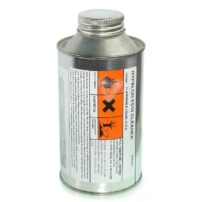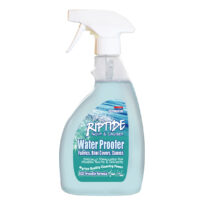Loos & Co. Tension Gauge – Professional Models
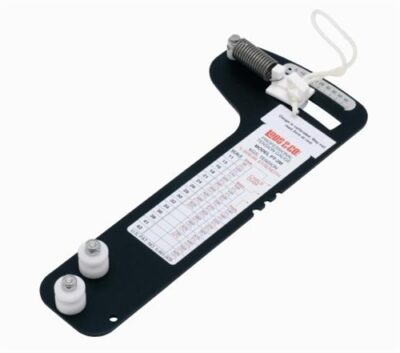 Loos offers a tension gauge to measure the tension in cables and rods from 3/32 to 3/8 inch in diameter (2.5 mm to 10 mm). These gauges are designed for setting the proper tension in the standing rigging of sailboats and also for other applications such as supporting cables for radio towers, large tents and other structures. The gauges are relatively inexpensive and are designed to be suitable for rugged marine service. The “Professional Models” provide an increasing durability, accuracy and convenience of use when compared to the popular standard models. The gauge may be hooked on the wire and will remain in position while the tension is adjusted. Manufactured of rugged anodized aluminum, these gauges are corrosive resistant and will give years of service. Detailed operating instructions are included with each tension gauge.
Loos offers a tension gauge to measure the tension in cables and rods from 3/32 to 3/8 inch in diameter (2.5 mm to 10 mm). These gauges are designed for setting the proper tension in the standing rigging of sailboats and also for other applications such as supporting cables for radio towers, large tents and other structures. The gauges are relatively inexpensive and are designed to be suitable for rugged marine service. The “Professional Models” provide an increasing durability, accuracy and convenience of use when compared to the popular standard models. The gauge may be hooked on the wire and will remain in position while the tension is adjusted. Manufactured of rugged anodized aluminum, these gauges are corrosive resistant and will give years of service. Detailed operating instructions are included with each tension gauge.
Professional Models – Higher accuracy and easier to use than standard models. The cable can be adjusted while the gauge remains on the cable. “Just watch the pointer move.” All readings are based on 302/304 1×19 S.S breaking strengths.
We stock the the Imperial and Metric models.
Rod Rigging Gauge Features:
- Hands-free tensioning while gauge remains on cable
- Higher accuracy
- Easy to use
- Dieform Wire compatible
Cable Sizes:
PT-1: 3/32″, 1/8″, 5/32″ / PT-1M: 2.5mm, 3mm, 4mm / PT-2: 3/16″, 7/32″, 1/4″ / PT-2M: 5mm, 6mm, 7mm / PT-3: 1/4″, 9/32″, 5/16″, 3/8″ / PT-3M: 7mm, 8mm, 9mm, 10mm.
The Benefits of Correct Rigging Tension
Contrary to popular thought, a slack rig is more punishing on a hull than a properly adjusted, tight rig. Insufficient tension will reduce the loads transmitted to the hull.
Slack rigging will punish the spar and rigging needlessly by allowing excessive movement, chafe and shock loading. Modern fiberglass hulls should not be damaged by properly adjusted, tight rig.
The diagram below lists the rigging tension under different conditions for a typical boat with a properly tuned rig and with a slack rig. It will be noted that the maximum load is the same. However, for the properly tuned rig the leeward shrouds will not go slack under normal sailing conditions.
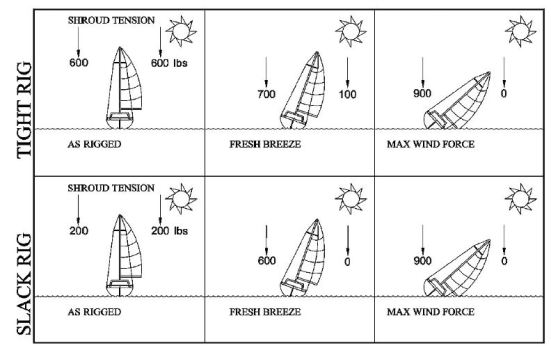 The lateral stiffness of the mast and the fore and aft stiffness of the spreaders is reduced by a factor of 2 when the leeward shrouds go slack. This important structural characteristic is not generally recognized.
The lateral stiffness of the mast and the fore and aft stiffness of the spreaders is reduced by a factor of 2 when the leeward shrouds go slack. This important structural characteristic is not generally recognized.
Rigging tension is becoming more important as a result of the trend toward the use of mast bend to control mainsail shape under different wind conditions.
Mast bend will also affect the shape and trim of the jib, since mast adjustment generally affects forestay tension. The expert skipper will benefit by maintaining consistent rigging tension while developing the optimum sail shape and sailing tactics.
Please refer to the manufacturer’s website for more information: www.loosnaples.com

